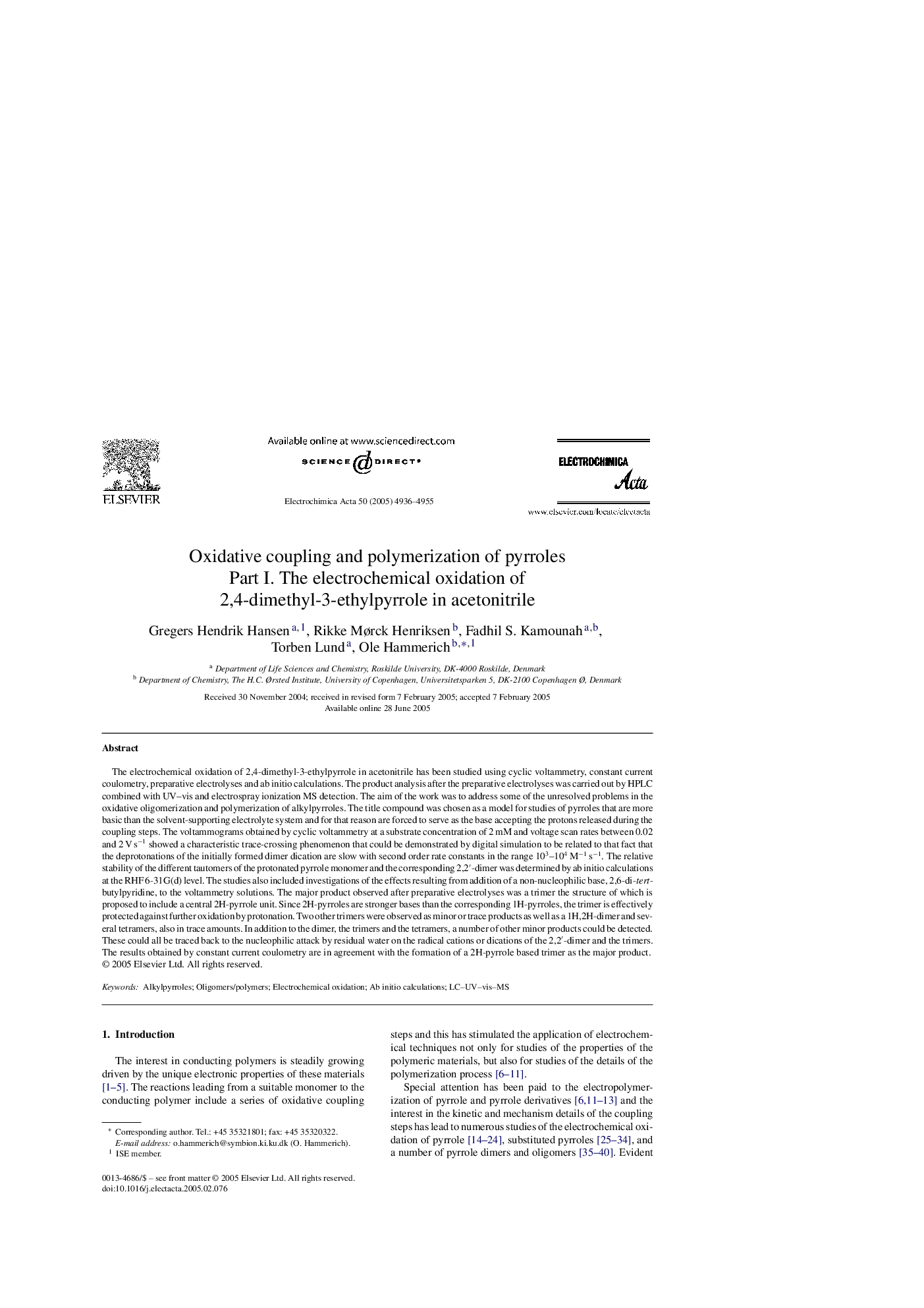| Article ID | Journal | Published Year | Pages | File Type |
|---|---|---|---|---|
| 197017 | Electrochimica Acta | 2005 | 20 Pages |
The electrochemical oxidation of 2,4-dimethyl-3-ethylpyrrole in acetonitrile has been studied using cyclic voltammetry, constant current coulometry, preparative electrolyses and ab initio calculations. The product analysis after the preparative electrolyses was carried out by HPLC combined with UV–vis and electrospray ionization MS detection. The aim of the work was to address some of the unresolved problems in the oxidative oligomerization and polymerization of alkylpyrroles. The title compound was chosen as a model for studies of pyrroles that are more basic than the solvent-supporting electrolyte system and for that reason are forced to serve as the base accepting the protons released during the coupling steps. The voltammograms obtained by cyclic voltammetry at a substrate concentration of 2 mM and voltage scan rates between 0.02 and 2 V s−1 showed a characteristic trace-crossing phenomenon that could be demonstrated by digital simulation to be related to that fact that the deprotonations of the initially formed dimer dication are slow with second order rate constants in the range 103–104 M−1 s−1. The relative stability of the different tautomers of the protonated pyrrole monomer and the corresponding 2,2′-dimer was determined by ab initio calculations at the RHF 6-31G(d) level. The studies also included investigations of the effects resulting from addition of a non-nucleophilic base, 2,6-di-tert-butylpyridine, to the voltammetry solutions. The major product observed after preparative electrolyses was a trimer the structure of which is proposed to include a central 2H-pyrrole unit. Since 2H-pyrroles are stronger bases than the corresponding 1H-pyrroles, the trimer is effectively protected against further oxidation by protonation. Two other trimers were observed as minor or trace products as well as a 1H,2H-dimer and several tetramers, also in trace amounts. In addition to the dimer, the trimers and the tetramers, a number of other minor products could be detected. These could all be traced back to the nucleophilic attack by residual water on the radical cations or dications of the 2,2′-dimer and the trimers. The results obtained by constant current coulometry are in agreement with the formation of a 2H-pyrrole based trimer as the major product.
